Union of Sovereign States
| Union of Sovereign States | |
|---|---|
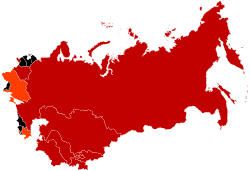 The Soviet Republics which drafted the New Union Treaty (orange and dark red) and the non-participating republics (black). | |
| Status | Non-existent |
| Capital and largest city | Moscow |
| Official languages | Russian |
| Religion | see Religion in the Soviet Union |
| Demonym |
Russian Soviet |
| Republics |
|
| Government | Proposed confederation |
| Mikhail Gorbachev | |
| Confederation | |
• Proposed | 23 November 1990 |
| 17 March 1991 | |
• "9+1" Agreement | 23 April 1991 |
|
8 December 1991 21 December 1991 | |
| Area | |
• Total | 22,402,200 km2 (8,649,500 sq mi) |
| Population | |
• 1991 estimate | 293,047,571 |
• Density | 13.1/km2 (33.9/sq mi) |
| Currency | Soviet ruble (руб) (SUR) (SUR) |
| Time zone | UTC+2 to +12 |
| Driving side | right |
| Internet TLD | .su |
The Union of Sovereign States (Russian: Союз Суверенных Государств (ССГ), translit. Soyuz Suverennykh Gosudarstv (SSG)) was the proposed name of a reorganization of the Union of Soviet Socialist Republics into a new confederation. Proposed by the then President of the Soviet Union, Mikhail Gorbachev, the proposal was an attempt to avert an end to the Soviet Union. The proposal was never implemented in the wake of the August Coup in 1991 and the dissolution of the Soviet Union ultimately occurred on December 26th of that year. The overall proposal was resurrected as the Commonwealth of Independent States (CIS), although as a regional organization, not a confederation.
Development
The New Union Treaty (Russian: Новый союзный договор, translit. Novyy soyuznyy dogovor) was a draft treaty that would have replaced the 1922 Treaty on the Creation of the USSR and thus would have replaced the Soviet Union with a new entity named the Union of Sovereign States, an attempt of Mikhail Gorbachev to salvage and reform the Soviet Union. A ceremony of the Russian SFSR signing the treaty was scheduled for 20 August 1991, but was prevented by the August Coup a day earlier. The preparation of this treaty was known as the Novo-Ogarevo process (новоогаревский процесс), named after Novo-Ogaryovo, a governmental estate where the work on the document was carried out and where Gorbachev talked with leaders of Union republics.
A less centralized federal system was proposed by President Gorbachev during the Communist Party Congress of July 1990. A draft of the New Union Treaty was submitted to the Supreme Soviet of the Soviet Union on November 23, 1990. A drafting committee started work on the text on January 1, 1991. Six of the fifteen Soviet republics, however, did not participate in drafting of the treaty: Estonia, Latvia, Lithuania, Moldavia, Georgia and Armenia. The proposal was approved by the Soviet of the Union on March 6 and sent to the Supreme Soviets of each republic for approval. Agreement could not be reached on the distribution of power between the Union and the Republics and the proposal was not approved. As an additional restrictive element, some autonomous republics expressed the desire to raise their status and to be a party to the new Soviet treaty.
President Gorbachev tried to gain popular support for the proposal. On March 17, 1991, a popular referendum was held in the nine republics (Russia, Ukraine, Byelorussia, Kazakhstan, Azerbaijan, Uzbekistan, Kirghizia, Turkmenia, and Tajikistan) which participated in the drafting of the treaty. In the referendum 76% of voters supported maintaining the federal system of the Soviet Union, including a majority in all of the nine republics. Opposition was greatest in large cities like Saint Petersburg (then Leningrad) and Moscow. The referendum was mostly boycotted in the other six republics as they were already moving towards independence.
An agreement between the Soviet central government and the nine republics, the so-called "9+1" agreement, was finally signed in Novo-Ogaryovo on April 23. The New Union Treaty would have converted the Soviet Union into a federation of independent republics with a common president, foreign policy, and military.
By August, eight of the nine republics, except Ukraine, approved the draft of the new Treaty with some conditions. Ukraine did not agree on the terms of the Treaty. In the republican referendum on March 17, the majority of residents of Ukraine supported joining the Union on the terms of Declaration of State Sovereignty of Ukraine.
Though the treaty was intended to save the union, hardliners feared that it would encourage some of the smaller republics to follow the lead of Lithuania and press for full independence. In August 18, the hardliners took control of the government after confining Gorbachev in his Crimean dacha in order to stop him from returning to Moscow to sign the treaty. The August Coup collapsed in the face of overwhelming popular opposition not only from the smaller republics but from larger ones, especially Russia.
Because the treaty was ultimately never signed at all, even in the aftermath of Ukrainian independence in December, the leaders of republics organized the Commonwealth of Independent States, an alliance of 12 newly independent states (initially all ex-Soviet republics except the Baltic states and Georgia, which joined in 1993, but withdrew again in 2008).
Names
On the first draft of the treaty released in July 1991, the proclaimed name for the new nation was the Union of Soviet Sovereign Republics; Russian: Союз Советских Cуверенных Республик, translit. Soyuz Sovetskikh Suverennykh Respublik.[1] This name was proposed in order to conserve the Russian "СССР" acronym, as well as the "USSR" and "Soviet Union" in English.
By September 1991, the overall support for preserving the Soviet state changed to reform the Soviet Union into a confederation of sovereign states. The final draft renamed the proposed state the Union of Sovereign States; Russian: Союз Суверенных Государств, translit. Soyuz Suverennykh Gosudarstv.[2] The overall continuation of the Soviet Union continued to drop and was soon abandoned. Following the August coup, the new union treaty was further reformed into the Commonwealth of Independent States.
Projected member republics and ASSR
.svg.png)
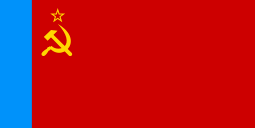
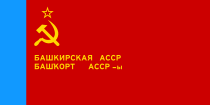
.svg.png)
.svg.png)






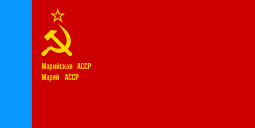



.svg.png)

.svg.png)
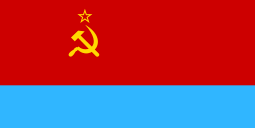
.svg.png)
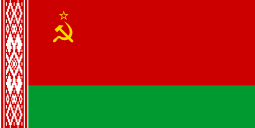

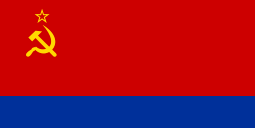
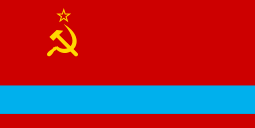

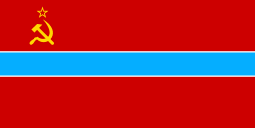
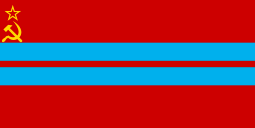
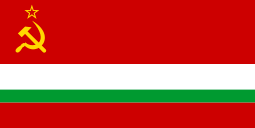
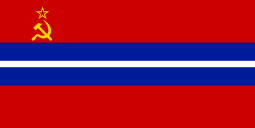
Republics that rejected the Treaty
See also
References
Sources
- The USSR in 1991: The Implosion of a Superpower by Dr. Robert F. Miller, RSSS, ANU.
- 1991 Diplomatic Bluebook, Section 4. The Soviet Union by the Japanese Foreign Ministry.
